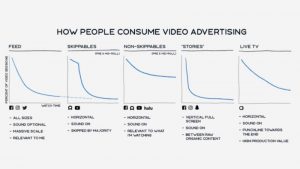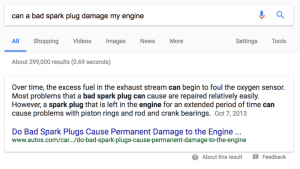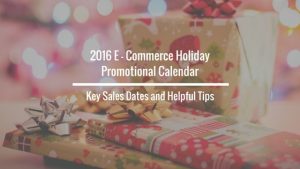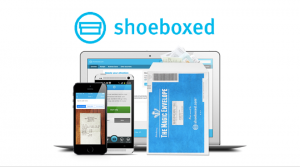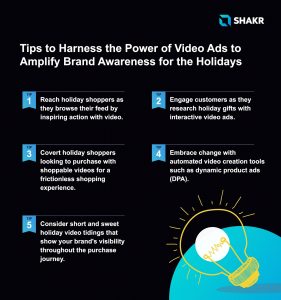— October 2, 2017

PublicDomainPictures / Pixabay
Before taking an Account Based Sales & Marketing approach, Schneider Logistics was seeing maybe 1 out of 5 leads engage successfully. In speaking with many other complex solution-sales companies, I am finding that has become a growing trend.
This happens because most of the leads being delivered by marketing and inside sales are not able to be fully qualified, and as a result many fall outside of the ‘wheel house’ of our network. For example, clients may not have US-based supply chains, may not use LTL as their primary transportation mode, may have specialized equipment requirements, or may be outside of our ideal spend range.
Sales teams have been clamoring for better quality leads since the first solution ever sold. “Why should I spend time hunting when I can spend time closing?,” we’ve asked…and we’ve known the answer as well.
We need quality leads to enable quality close rates – and that takes time.
Prospecting is the most challenging part of the sales process.
Most complex solutions and technology companies are heavily differentiated within a specific market. Inside of that market, they flourish at a 50% or higher win rate. But outside of that niche, the win rate can drop to single digits.
Because it’s a complex service and a specific audience, they are not able to purchase lead lists, cold call, or automate marketing like a transactional sales company. Instead, they rely on an experienced Inside Sales team to identify and engage their audience. Inside Sales must then have an undying passion for the greatest challenge of all: to move the needle by sheer numbers.
Through brute force, they will find the 10% of the market who are already open to buying. Incidentally, our competitors are using this same technique to pursue this same 10% of clients.
The numbers will work, but only so fast.
By making a certain amount of contacts each day by phone, email and on LinkedIn, we will inevitably find the 10% of our market who are open to change. Then, by maintaining monthly contact for 1 to 3 years, we will wait patiently to find the window in which they’re open to a conversation.
This process works but, unfortunately, it takes time. Without first having a conversation, we’re not able to show clients a compelling reason to consider the full value of our solution.
Meanwhile, Outside Sales is left to carry two heavy burdens:
- To develop sudden, on-the-spot value props for the receptive prospects we do find
- To develop their own strategy for breaking the status quo with the other 60% of the market, who were notresponsive to lead gen but who are known to be an ideal fit
This same logic applies to ‘stuck’ deals, where prospects have engaged in discussions, but the deal is not moving forward in the funnel because they’re not able to clearly see a differentiator.
Further, since our competitors are using this same approach to target this same 10% of the market, and because our clients are unable to see any strategic differentiators, we end up in RFP rate battles.
94% of buyers conduct their research online prior to engaging Sales (Accenture)
The modern, educated buyer now uses Google to qualify sales people before returning contact. They find our LinkedIn profile, and decide whether we appear valuable and educational enough to re-organize their priorities.
The good news is that the modern, educated sales force can take advantage of this situation. Since customers are coming online to discover our personal brand and our differentiated value prop, we can intentionally place those key details right where they would like to find them.
When at least 57% of all buying decisions are made before Outside Sales enters the conversation, it’s no surprise that breaking through the 10% barrier remains a difficult task to tackle.
Enter: Account Based Marketing.
Difficult, but not impossible. There is a better way.
In the ‘ABM’ process that fits between inside and outside sales, Marketing does a deep dive research on specific, targeted accounts. This is necessary to discover the unique insight that will help to shift their thinking from the pink “not interested” area up into the orange “open to buying” zone.
- LinkedIn profiles are built to speak to specific audiences with commercial insight.
- Talking points are engineered to create a re-frame or ‘aha moment.’
- Success stories are crafted to show a relevance to influencers and decision makers.
- Relevance is demonstrated at all 4 levels: industry, company, rank and personal.
- Prospecting can now build trust, credibility & demand for the Sales process.
Armed with relevance and insight, Sales is able to use LinkedIn to create the window for demand, rather than wait for it.
CEB’s studies have also shown that the single largest factor in client loyalty is the sales experience (53%), so making these small shifts suggests we can improve account longevity as well as win rates.
Some ‘traditional’ sales leaders believe it’s not possible.
Oracle’s VP of Sales recently described to me that he believed it was impossible to generate demand and that LinkedIn could only be used as a ‘listening’ tool to wait for the right window. However, the VP of Sales at Schneider Logistics has proven Challenger, ABM and Demand Generation to be fruitful.
As one example, a $ 400k account had been unresponsive to prospecting for over 4 years, so Sales & Marketing agreed to take an account based approach. Content was created to help Sales teach the individual contacts within the account about the gaps between TMS systems and Logistics provider technologies. The stories were built to show how the gaps impacted the employees personally, rather than speaking about impact to the ‘company.’
Within a few short months, because they had created differentiation among their market, applied a personal relevance, and ‘lead with’ commercial insight crafted specifically to ‘lead to’ their solution, they had soon opened – and closed – an opportunity that was previously considered untouchable.
In addition, this approach created:
- A 75% sales funnel win rate for ABM-targeted accounts
- A 3-month reduction in the average sales cycle, and
- A 3378% ROI on the marketing budget
“A lead developed by social selling is 7x more likely to close.” – IBM
Through ABM, marketing creates an improved experience to the client, to inside sales, and to outside sales by enabling one cohesive line of conversation all the way from Open to Close. While our competitors are struggling to close on 1 out of 3 leads, we can now plan for 2 out of 3 when applying Account Based Sales & Marketing through LinkedIn.
In the current environment, many contract service providers, LSP’s, 3PL’s, consulting and technology firms are looking for opportunities to increase efficiency, add new channel partners to better support customers, invest in updated technology, or simply to boost and stabilize results across multiple sales teams. These improvements can be achieved when personal brands are aligned with your insight and success stories, and designed to ‘lead to’ rather than ‘lead with’ your differentiated value prop.
Digital & Social Articles on Business 2 Community
(55)
Report Post

